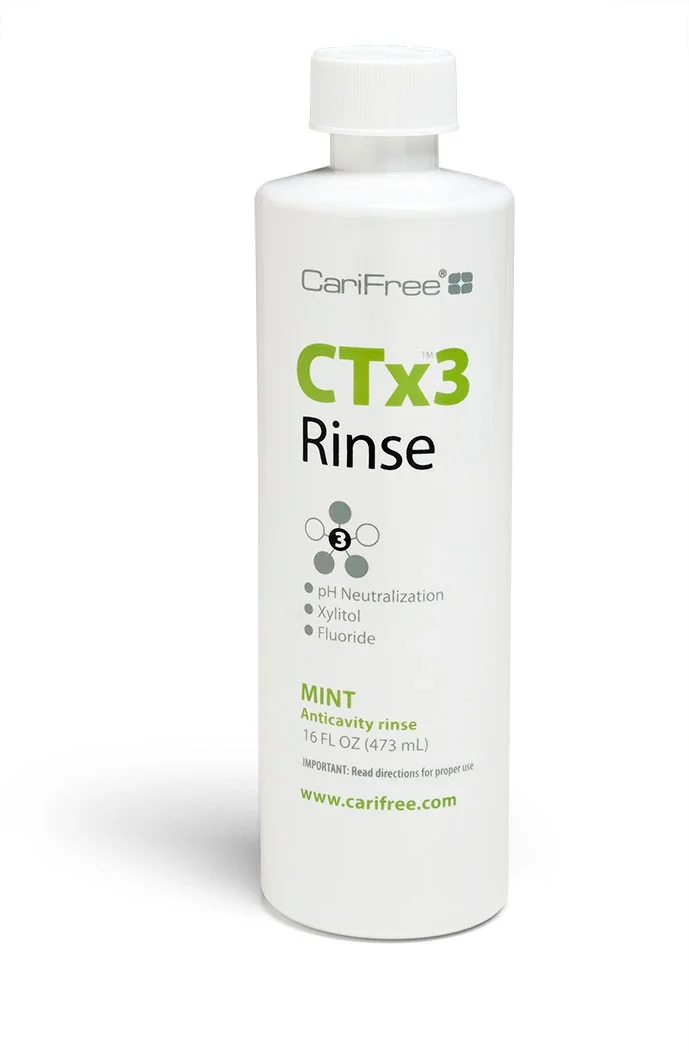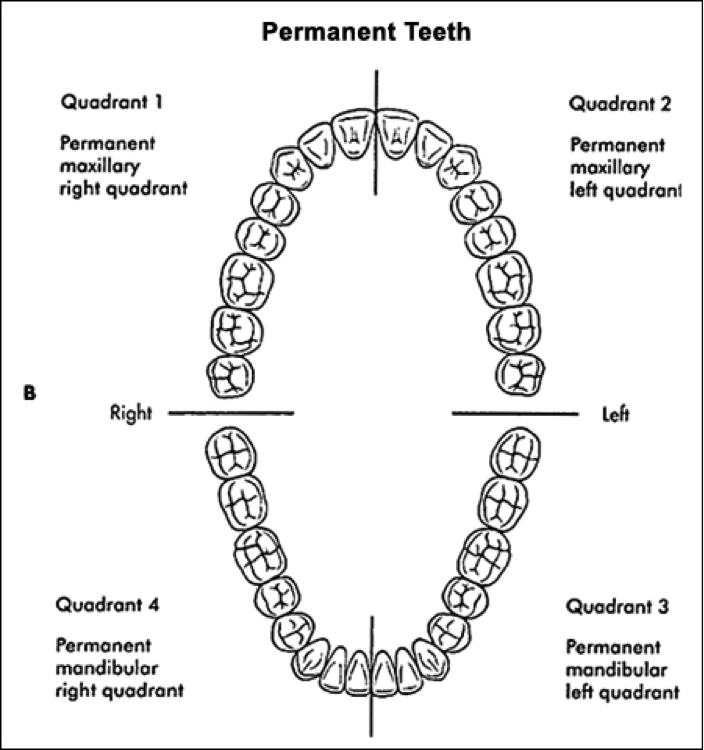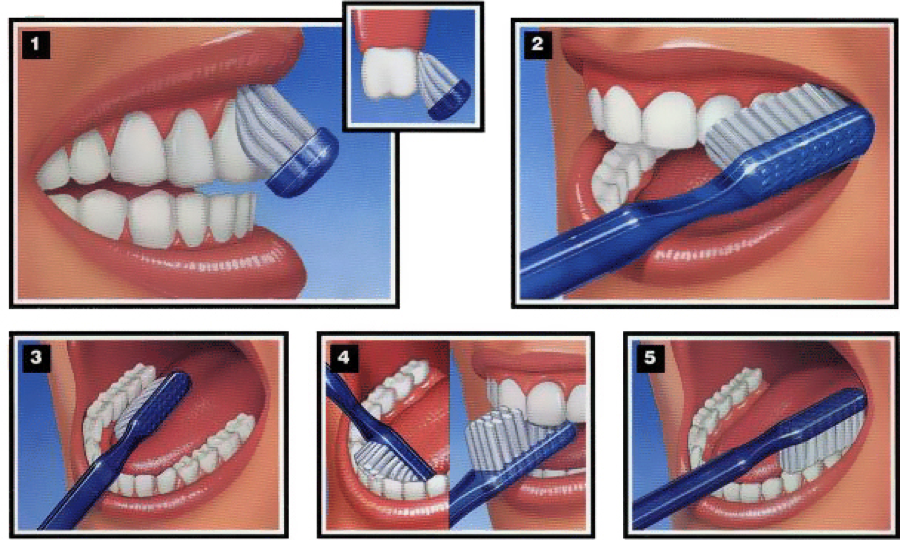For the majority of our patients, standard home dental maintenance is sufficient to maintain strong, healthy teeth. Unfortunately, some individuals are always battling tooth decay and cavities, no matter how diligently they floss and brush. Modern dental research has given rise to a number of great products that can help these patients in a safe and predictable manner. At our office, we have two great solutions that can add extra power to your daily routine- Carifree CTx3 Rinse and MI Paste.
Before we explain how these products work, let’s do a quick review of the anatomy of tooth decay:
1) Your teeth are made of calcium and phosphate
2) Acid erodes tooth structure, which releases the calcium and phosphate
3) Acid can arise from food, bacteria eating food, medication or other body systems
4) Your saliva can help remineralize tooth structure, but only if the mouth isn’t acidic AND there is enough saliva present (i.e. not dry mouth)
5) Certain compounds, such as fluoride, can encourage and promote your teeth to take in more calcium and phosphate, above what your saliva does.
With all this in mind, lets take a look at how these wonderful products can help mitigate further degradation of tooth structure!
Carifree CTx3 Rinse is a “mouthwash” type product that you use once a day before going to bed. While your mouth becomes dried out during the night, CTx3 rinse provides a whole spectrum of benefits to combat potential decay. Firstly, it’s pH neutral formula prevents extreme acidic events. Essentially, your mouth is protected from a low pH environment, which can soften tooth structure and erode enamel. Secondly, it contains a therapeutic dose of xylitol, a natural plant derived sugar. When your mouth bacteria metabolize xylitol, their acid production is limited or stopped. Additionally, xylitol can stimulate saliva flow, which is excellent for combatting almost every facet of decay. Finally, the CTx3 contains fluoride, a carrier ion that helps calcium phosphate integrate and remineralize existing tooth structure.
MI Paste is a “toothpaste” like cream that is applied to the teeth right before bedtime. This product utilizes a patented form of bio-available calcium phosphate called Recaldent. It is purified from dairy products (but contains almost no lactose) and is identical to the calcium phosphate that makes up your teeth. The idea behind MI Paste is that by saturating the teeth in the building blocks for remineralization, enamel can repair itself faster and more efficiently. On top of preventing tooth decay, this paste is excellent at minimizing whitening sensitivity. By giving tooth enamel extra fortification, the microtubules within teeth are less susceptible to conduct sensitivity.
Whether you prefer a rinse or paste, CTx3 and MI Paste are great products. Both are made in a number of flavors and are available at our office. Remember, length of exposure is key to both of these product’s success. Do not eat, drink or rinse after applying either; let them sit on your teeth overnight. If you have any questions on these products, how they are used, or who might benefit from them, do not hesitate to contact our office. We want your mouth to be happy and healthy, and have a number of great products to get you there!













